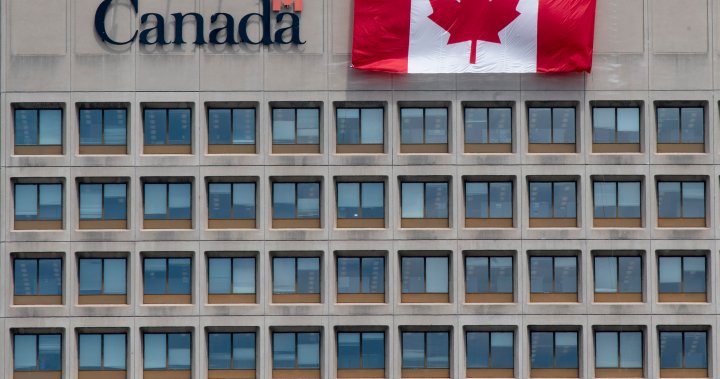The federal government has made little headway on its pledge to get rid of unused office space and transform some of it into affordable housing.
A report released Tuesday by Auditor General Karen Hogan found that Public Services and Procurement Canada has made “scant progress” on that commitment, reducing its office footprint by only two per cent between 2019 and 2024.
The department planned to cut office space by 50 per cent by 2034, estimating it could save nearly $4 billion over the next decade.
But Hogan says there has been little movement on the initiative, which could also alleviate the housing crisis. The auditor general blamed the inaction “mainly on a lack of funding.”
“The federal government has been slow to reduce office space and cut costs to support hybrid work, and to convert surplus properties into affordable housing,” Hogan said.
“Public Services and Procurement Canada and federal tenants need to accelerate their efforts to reduce the office space they occupy and contribute to increasing stock for housing that is sustainable, accessible, and affordable.”

Get breaking National news
For news impacting Canada and around the world, sign up for breaking news alerts delivered directly to you when they happen.
Last year, former prime minister Justin Trudeau promised to free up public land and vacant government offices to build more homes for Canadians, as part of his commitment in the Liberals’ 2024 budget to restore fairness “for every generation.”
“Governments across Canada are sitting on surplus, underused public land, like empty office towers, low rise buildings, there is great potential.” To unlock some of that potential, Trudeau announced a $500-million public lands acquisition fund.
In 2017, Ottawa estimated that half of its office space was either vacant or underused. Three years later, even more buildings sat empty, as COVID-19 ushered in a new era of remote work.
Today, with public servants mandated to work a minimum of three days a week in office, most federal offices are still not at 100 per cent capacity.
With bureaucrats back in the office, federal tenants are reluctant to leave.
“More public servants needing to spend more time in the building and hence are hesitant … to clear out of the building,” Hogan said.
“I know from our office I can tell you that we put up our hand and said with hybrid work, we don’t need the space that we have, and we have offered to reduce our workspace,” she added. “I would hope that other deputy heads would do the same in order to support the goal.”
© 2025 Global News, a division of Corus Entertainment Inc.
Read the full article here
